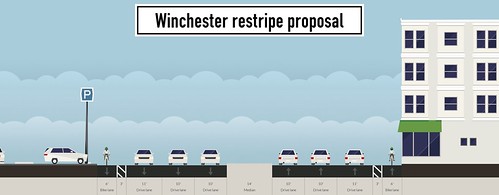Last night’s tragic news of a five people killed by a maniac behind the wheels of a Chevy pickup truck on a rural road north of Kalamazoo, Michigan continues to dominate social media. County attorney Jeff Getting and Michigan Governor Rick Snyder expressed their condolences and promised to fully investigate and prosecute the 50-year-old man who allegedly ran down the group.
For those who haven’t hard yet, police across three different counties began receiving calls about a reckless driver. Shortly after 6:30 P.M., this driver caught up to a group bike ride on the 5500 block of Westnedge Road north of Kalamazoo, Michigan. Media reports indicate the Chevy truck “looked like it hit a brick wall.” Police caught the alleged driver fleeing on foot. Five of the cyclists perished by the time medical help arrived, and another four remain hospitalized with serious to critical injuries.
Media response has been sympathetic to the cyclists, as have statements from local and state officials. Media and police all report the cyclists were riding uphill in the shoulder of a straight, rural road, and that the unnamed Chevy driver slammed into them at high speed in the shoulder.
Both the media and local officials have made parallels with last February’s shootings during which Uber driver Jason Dalton allegedly shot and killed six people and injured another two. Dalton claims the Devil manifested himself through the Uber app and forced Dalton to commit the murders.
Media, for the most part, have avoided calling this an “accident.” One notable exception was the Atlantic, which is ordinarily pretty good about such things. The Atlantic later changed their headline after several people called them out on this language.
I’d also hope that a “director of road safety” for a large cycling club would be aware of the national discussion regarding “accidents” and traffic safety, but I know from personal experience that one doesn’t always think and speak clearly when ambushed by media immediately after a tragedy like this.

The reader comments following these news media reports seem more sympathetic than usual, though, naturally, the dregs of humanity feel compelled to contribute their sociopathic stupidity about licensing cyclists and worse. I was a little discouraged to see victim-blaming coming from one of our own, however, in a story that mostly did a decent job fitting this crash into a wider narrative about cyclist safety.

He appears to put the onus of safety on the more vulnerable road user even as he tries to make some sense of this tragedy. After discussion with others, I’ve reconsidered my opinion of Strader’s comments. I’ve made similar comments about my personal preferences on local roads after reports of crashes and close calls, while maintaining that cyclists have full rights to use these public roads.
The 5500 block of North Westnedge Avenue looks like this:

There is absolutely no excuse for that Chevy truck driver not to have seen a large group of people on bikes, regardless of their position or even their choice to use this road.
About two dozen people lose their lives each year while riding a bicycle in Michigan. I imagine those closest to the scene of this mass casualty are in a state of shock. My sincere condolences to them, with hopes for real change in all our attitudes about road safety. Sorry for the sloppiness of my stream-of-consciousness narrative, but this it’s always difficult to get a handle on incidents like this.








